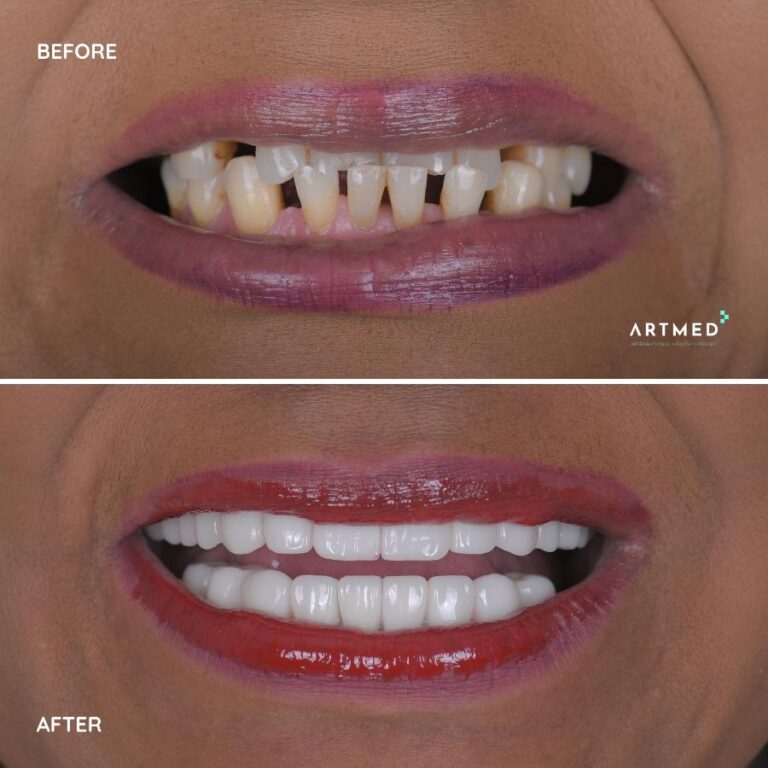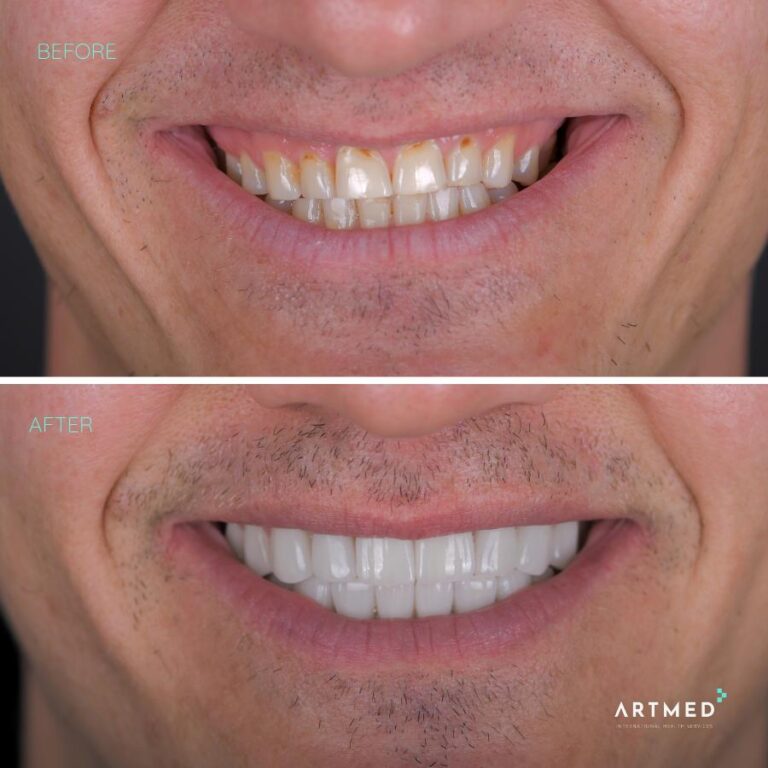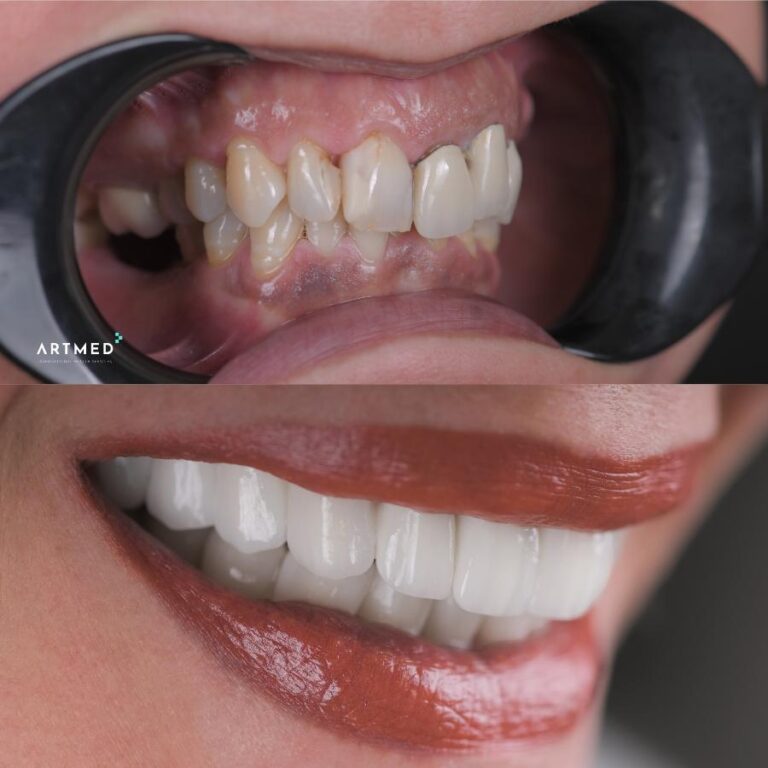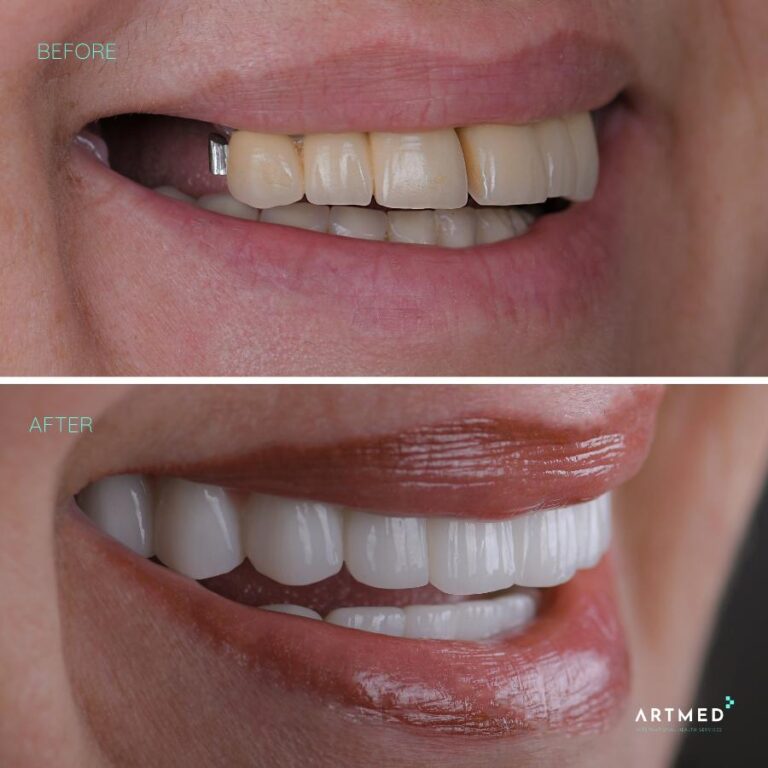Introducing Dr. Arten - Your Trusted Dental Expert
We are thrilled to welcome Dr. Arten , a highly skilled and compassionate dentist dedicated to providing exceptional dental care. With 15 years of experience in the field, Dr. Arten specializes in Oral Surgery and Esthetic Dentistry ( Dental implants , Oral surgery procedures , Hollywood Smile , Laminate Venners ) ensuring that every patient receives personalized treatment tailored to their unique needs.
Dr. Arten graduated from Hacettepe University which is the best dental university in Turkey and has since committed to staying at the forefront of dental advancements through continuous education and training. Known for his gentle approach and attention to detail, Dr. Arten creates a comfortable environment where patients can feel at ease while receiving top-notch care.
Beyond clinical expertise, Dr. Arten believes in the importance of educating patients about their oral health, empowering them to make informed decisions about their dental care. Whether it’s a routine check-up or a more complex procedure, you can trust Dr.Arten to provide compassionate, thorough, and professional care.
Join us in welcoming Dr. Arten to our practice, where a beautiful smile and excellent oral health await!
Dr.Arten is part of the best and most respected global associations for dentists such as ADA ( American Dental Association ) , EFP (European Federation of Periodontology ) ,each of them offering unique resources and networking opportunities for dental professionals worldwide.
He is also a honored member of EDAD (Turkish Academy of Esthetic Dentistry) .
Being passionate in dentistry has provided
Driven by a deep passion for dentistry, Dr.Arten has traveled worldwide to attend numerous conferences, continually expanding my expertise and staying at the forefront of innovative dental practices.
Dedicated to offering truly painless treatments, Dr. Arten has attended advanced training in hypnosis, adding a unique approach to patient comfort and care.

Dental implants are advanced, durable solutions for replacing missing teeth. These titanium screws are surgically placed into the jawbone, serving as stable roots for replacement teeth, such as crowns, bridges, or secure dentures.
Tooth loss can be distressing both emotionally and functionally. Missing teeth can make it difficult to chew or speak, while causing the surrounding teeth to shift. Over time, the jawbone where the tooth is missing may begin to shrink, further affecting oral health.
Unlike traditional alternatives, dental implants not only replace the missing tooth but also help preserve the bone by stimulating its growth. Through a process called osseointegration, the titanium implant fuses with the jawbone, creating a strong, long-lasting foundation. Typically, the placement of an implant is done via a minor surgical procedure under local anesthesia. For patients with dental anxiety, sedation options are available to ensure comfort throughout the procedure.
Dental implants are versatile, capable of replacing a single tooth, several teeth, or even a full set of teeth. In the case of multiple missing teeth, it's often possible to attach several replacement teeth to a single implant, depending on the location in the mouth and the patient's needs.
How It Works
The dental implant itself is a titanium screw that is placed into the jawbone, mimicking the root of a natural tooth. After the implant has integrated with the bone, it provides a stable base for the placement of crowns, bridges, or dentures.
Once fully restored, dental implants not only look natural but also function like real teeth, providing strength for chewing and maintaining facial structure.
Procedure Breakdown
- Initial Consultation: Your dentist will evaluate your oral health, including the condition of your gums and jawbone, through X-rays or CT scans. This helps determine whether the bone is strong enough to support the implant. If necessary, a tailored treatment plan is created.
- Tooth Extraction (if needed): If a damaged tooth is being replaced, it will first be extracted to prepare the area for the implant.
- Bone Grafting (if necessary): If the jawbone has deteriorated, bone grafting may be performed to rebuild the bone structure, ensuring there is enough bone for the implant to fuse securely.
- Implant Placement: The titanium screw is surgically placed into the jawbone, typically under local anesthesia or sedation. This step usually requires a 3-6 month healing period to allow the implant to fully integrate with the bone (osseointegration).
- Abutment Placement: Once the implant has fused with the bone, an abutment (a small connector) is placed on top of the implant. This provides the necessary support for the final restoration.
- Crown, Bridge, or Denture Placement: After the gum tissue has healed, a custom-made restoration (crown, bridge, or dentures) is attached to the abutment. The dentist ensures that it fits perfectly and matches the natural color and appearance of your teeth.
- Recovery and Follow-Up: After the procedure, follow-up visits are essential to ensure the implant is functioning properly and healing as expected. Regular check-ups are needed to monitor the implant's long-term success.

Hollywood Smile Makeover
A Hollywood Smile Makeover is the ultimate solution for transforming your smile, especially if you feel self-conscious about chipped, discolored, crooked, worn, or missing teeth. With personalized consultations from our team of specialists, you can achieve a bright, confident smile that enhances your overall appearance and self-esteem.
An improved smile offers more than just aesthetics—it boosts confidence, improves self-esteem, and can positively affect your well-being.
The Smile Makeover Process:
- Consultation and Assessment: Your cosmetic dentist will discuss your goals and concerns, conducting a thorough examination of your teeth, gums, and facial features. This allows us to develop a personalized treatment plan based on your preferences.
- Temporary Template: A temporary model of your new smile may be created, allowing you to preview how it will look before committing to the final treatment.
- Customized Treatment Plan: Based on your goals, we will create a detailed plan, outlining the necessary procedures, such as teeth whitening, veneers, crowns, or orthodontics, to achieve your desired result.
- Follow-Up Care: After your Smile Makeover is complete, we schedule regular check-ups to ensure long-term success and address any concerns.

Dental Crowns
Dental crowns are custom-made caps that fit over damaged, weakened, or discolored teeth to restore their strength, function, and appearance. They are commonly used to protect cracked teeth, support dental bridges, or serve as the final restoration following root canal treatment.
Why You May Need a Crown:
- Insufficient healthy tooth structure to support a filling
- Protection for weakened or cracked teeth
- Cosmetic improvement for discolored or misshapen teeth
- After root canal therapy to protect the treated tooth
Procedure Breakdown:
- Consultation and Planning: Your dentist will assess the tooth's condition and take X-rays or digital scans to plan the crown placement.
- Tooth Preparation: The damaged or decayed portion of the tooth is reshaped to create space for the crown. Any broken or decayed areas will be removed.
- Impression: A precise mold or digital scan is taken of the prepared tooth, which will be sent to a lab to create the custom crown.
- Temporary Crown: While the permanent crown is being made, a temporary crown is placed to protect the tooth.
- Crown Placement: Once your custom crown is ready, it is placed over the prepared tooth, and your dentist will check its fit and appearance before permanently cementing it in place.
- Final Adjustments: The crown is polished and adjusted for a perfect fit, ensuring both comfort and functionality.
How to Care for Your Crown:
- Brush and floss regularly, treating your crown like a natural tooth.
- Be cautious when flossing around your crown to avoid damaging it.
- Avoid chewing hard foods or objects that could cause the crown to break.

Dental Veneers
Dental veneers are thin shells of tooth-colored material, custom-made to cover the front surface of your teeth. They provide a solution for issues like chips, stains, misalignment, or gaps, helping to enhance your smile and confidence.
Candidates for Veneers:
- Chipped or cracked teeth
- Discolored or stained teeth
- Gaps between teeth
- Worn-down teeth
- Misaligned or irregularly shaped teeth
Types of Veneers:
1. Porcelain Veneers
Porcelain veneers are crafted in a lab by skilled technicians. They offer a natural look and are resistant to stains. The process typically requires 2-3 visits and involves minimal removal of enamel for a secure fit.
2. Composite Veneers
Composite veneers are made from a resin material that is applied directly to the teeth in a single visit. They are ideal for minor imperfections and provide a fast, affordable solution.
The Veneer Process:
- Consultation: Your dentist will evaluate your oral health and determine if veneers are right for you. This may involve X-rays or digital scans to create a treatment plan.
- Preparation: A small amount of enamel (usually 0.5 mm) is removed from the tooth to make room for the veneer.
- Impression: A mold or digital scan is taken to create your custom veneers, which usually takes 5 days.
- Temporary Veneers (Optional): Temporary veneers may be placed while you wait for the final product.
- Bonding: Once the veneers are ready, your dentist will check the fit, color, and appearance. After cleaning and preparing the teeth, the veneers are bonded using special cement and light to set them.
- Final Adjustments: After placement, your dentist will make any necessary adjustments and polish the veneers to achieve a natural, smooth finish.
Materials Used in Veneers:
- Porcelain: Highly durable, stain-resistant, and mimics the natural shine of teeth.
- Composite Resin: Less durable than porcelain but offers a more affordable, quicker option.
How Long Do Veneers Last?
- Porcelain veneers: 10-20 years with proper care.
- Composite veneers: 4-8 years, depending on wear and care.
Caring for Veneers:
- Brush and floss as usual, using non-abrasive toothpaste.
- Avoid staining foods and drinks (e.g., coffee, wine, tobacco).
- Be cautious with hard foods to prevent damage.

Dentures
Dentures are custom-made removable appliances that replace missing teeth, restoring both function and aesthetics. Whether you’re missing several teeth or a full arch, dentures offer a practical and natural-looking solution.
Why You Need Dentures:
Replacing missing teeth is crucial for your oral health. Without replacement, remaining teeth may shift, and the jawbone may deteriorate. Dentures restore chewing and speaking function while preserving facial structure.
Benefits of Dentures:
- Restores a full, natural-looking smile
- Allows you to eat and speak comfortably
- Durable and long-lasting
- Easy to remove for cleaning
- Helps maintain the health of remaining teeth
Types of Dentures:
1. Complete Dentures
Used when all teeth are missing. They fit over the gums and are custom-made to match the natural color of your gums and teeth.
2. Partial Dentures
Used when some natural teeth remain. They fill gaps and are anchored to remaining teeth with a metal framework.
3. Implant-Retained Dentures
These dentures are anchored by dental implants for a more stable and permanent fit. They provide a secure, comfortable solution with better chewing and biting abilities.
Caring for Dentures:
- Rinse and brush dentures after every meal.
- Soak dentures overnight in a special solution to prevent buildup.
- Brush gums and tongue to maintain oral hygiene.
With proper care, dentures offer a long-lasting, comfortable solution to restore both the function and appearance of your smile. Whether opting for removable or implant-supported dentures, we'll guide you through the fitting and adjustment process to ensure the best outcome.
Before and After Results
















